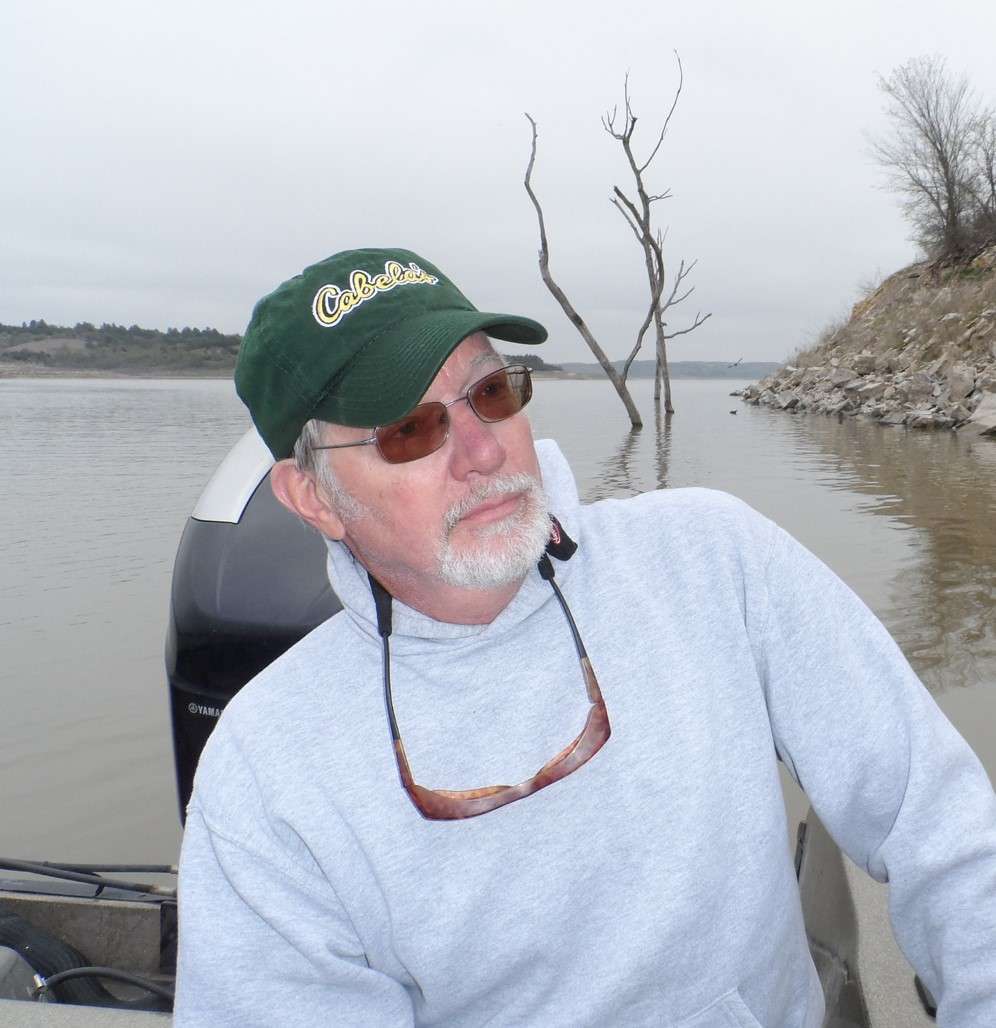With the 2022 Kansas spring turkey season ending, I sat here at my computer recalling spring turkey hunts from the past, and one particular hunt years ago keeps rambling through my mind. Now, everyone knows wild turkeys MUST be hunted from the ground. Sitting on the ground or on a five-gallon bucket until your butt and both legs are numb is just part of the turkey hunting experience, and NOT to do so would certainly be as un-American as eating pizza without potato chips, or owning a corvette with an automatic transmission. Yet there I stood, gazing longingly up the ladder of the landowner’s tree stand thinking what a perfect spot it would be to call-in the gobbler that roamed this wood lot. But I must persevere and not break turkey hunting protocol!
“What a great seat,” I thought to myself as I surveyed my surroundings from above (I’m sure you saw this coming.) At this point several acres of nice timber separated the crop field to my left from the river. Right here is where I wanted to be, but the ground below was unusually void of the normal brush and downed tree limbs that make such good camouflage, so I put out a couple hen decoys and up the tree I went.
My “yelps” were occasionally answered by a gobble from afar, and soon a young gobbler and a hen appeared from the far corner of the crop field and started toward me. “This is too easy” I thought as the pair steadily came my way. At fifty yards, they veered away and taunted me from the edge of the trees, hidden from sight by limbs on the tree next to my perch. For the next forty-five minutes it was a stand-off, and my desire to harvest him soon turned to wishes that he would just leave so I could climb down without totally spooking him and start afresh in the morning.
The next morning, I followed my bouncing flashlight beam across the field, found the proper tree, set the decoys out and scaled the ladder once more up and into the tree stand. This tree stood barely three feet into the woodlot from the edge of the crop field; if I fell out, I’d land in the bean stubble. I figured the gobbler to be roosted at the end of the crop field and along the river, some distance away. Usually you can hear a gobbler even in the dark, as he’ll often gobble at every barking dog, hooting owl or slamming car door, but this morning the woods was unusually quiet. Perhaps that wasn’t good; perhaps I had misdiagnosed where he roosted and would be left high and dry. Trying not to shatter yet another turkey hunting rule of “calling very sparingly while the turkeys are still roosted,” I watched and waited as daylight slowly poured itself across the landscape around me. I yelped softly with the box call and a gobble erupted beside me along the river probably seventy yards away; the rascal was roosting where I had not even considered. For thirty minutes he gobbled away, and I tried to find a good balance between calling back to let him know I was still interested and playing hard to get to make him come find me. For those thirty minutes he seemed not to move, and suddenly he was silent. I called softly a couple times but heard nothing in return. My heart dropped to my toes; what had I done wrong or not done right?
As I tossed the situation around in my mind, a gobble broke the stillness again, this time directly in front of me not far away; he had snuck quietly through the trees and was in the bean stubble where I knew he would see my plastic decoy “jezebels.” Soon I saw him strutting his way toward me in the open field. I put the call aside and brought the shotgun around into position. He got so close I heard him spit each time he fanned out, and could hear the scratching noise as each wingtip drug across the ground. I could see him well, but too many tree limbs were in the way for a sure shot. Like a target in an arcade, he marched back and forth but would not come any closer. I had just read an article where the author warned about placing decoys too close and creating just such a situation. It became another standoff as he remained behind too many limbs for a safe killing shot. I decided it was time for a plan “B”; if he would just step a little closer to the edge of the trees during his little show, he would momentarily be in a small clear spot for a shot. Finally, he appeared to stray a little closer to the trees, so as his back was toward me as he turned, I swung the shotgun around and leaned out around the tree trunk in front of me. He saw or heard me move and immediately dropped his tail feathers to run, but the twelve-gauge nailed him to the ground before he could take more than a couple steps.
If this story leaves some of you turkey hunting purists shaking your heads, I apologize. I’ve never been one to worry much about protocol. Maybe more of you have shot turkeys from tree stands than I know, but if not and the situation presents itself, give it a try. If you decide to try it, access your shooting lanes and place your decoys appropriately to draw the gobbler past you and to put him in a position for a clear shot if he hangs up a ways out.
Continue to Explore Kansas Outdoors!
Steve can be contacted by email at stevenrgilliland@gmail.com.




